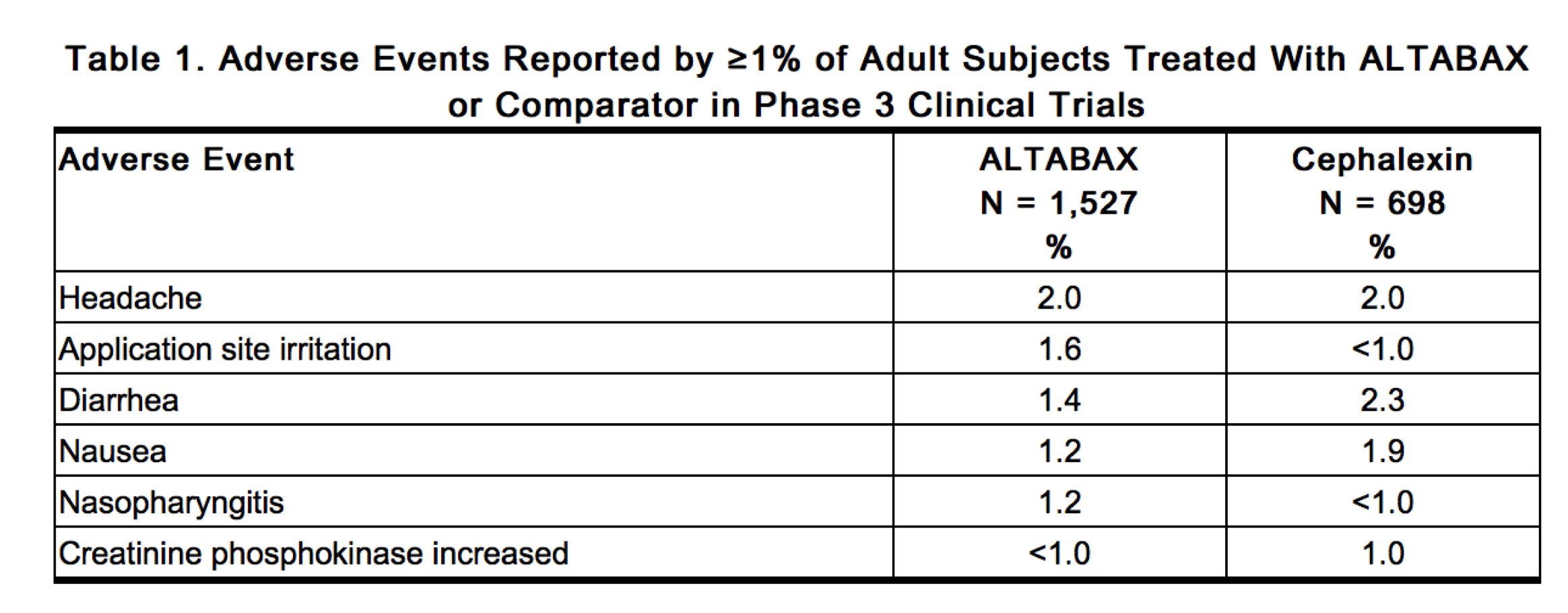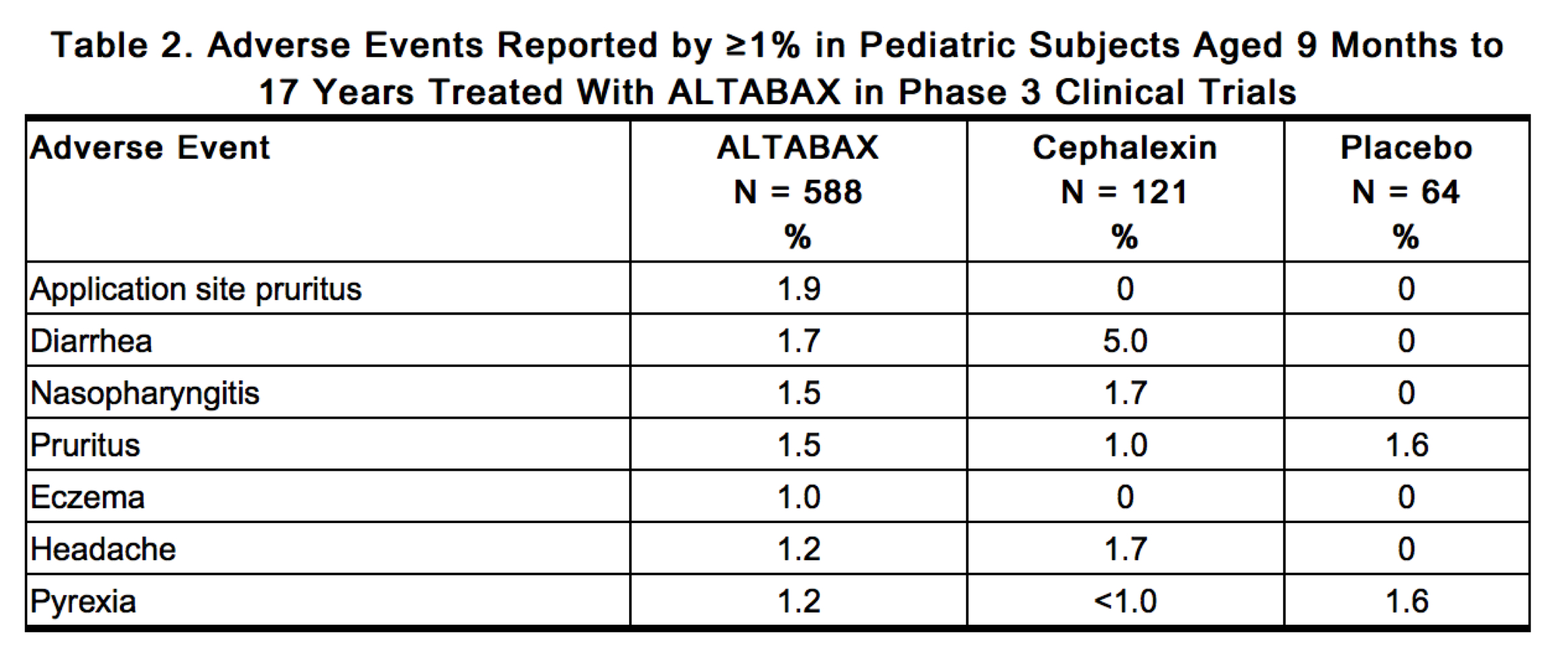Retapamulin adverse reactions
Editor-In-Chief: C. Michael Gibson, M.S., M.D. [1]
Adverse Reactions
Clinical Studies Experience
Because clinical trials are conducted under varying conditions, adverse reaction rates observed in the clinical trials of a drug cannot be directly compared with rates in the clinical trials of another drug and may not reflect the rates observed in practice. The adverse reaction information from the clinical trials does, however, provide a basis for identifying the adverse events that appear to be related to drug use and for approximating rates.
The safety profile of ALTABAX was assessed in 2,115 adult and pediatric subjects ≥9 months who used at least one dose from a 5-day, twice a day regimen of retapamulin ointment. Control groups included 819 adult and pediatric subjects who used at least one dose of the active control (oral cephalexin), 172 subjects who used an active topical comparator (not available in the US), and 71 subjects who used placebo.
Adverse events rated by investigators as drug-related occurred in 5.5% (116/2,115) of subjects treated with retapamulin ointment, 6.6% (54/819) of subjects receiving cephalexin, and 2.8% (2/71) of subjects receiving placebo. The most common drug-related adverse events (≥1% of subjects) were application site irritation (1.4%) in the retapamulin group, diarrhea (1.7%) in the cephalexin group, and application site pruritus (1.4%) and application site paresthesia (1.4%) in the placebo group.
Adults
The adverse events, regardless of attribution, reported in at least 1% of adults (aged 18 years and older) who received ALTABAX or comparator are presented in Table 1.
 |
Pediatrics
The adverse events, regardless of attribution, reported in at least 1% of pediatric subjects aged 9 months to 17 years who received ALTABAX are presented in Table 2.
 |
Other Adverse Events
Application site pain, erythema, and contact dermatitis were reported in less than 1% of subjects in clinical trials.
Postmarketing Experience
In addition to reports in clinical trials, the following events have been identified during postmarketing use of ALTABAX. Because these events are reported voluntarily from a population of uncertain size, it is not possible to reliably estimate their frequency or establish a causal relationship to drug exposure.
General Disorders and Administration Site Conditions: Application site burning.
Immune System Disorders: Hypersensitivity including angioedema.[1]
References
Adapted from the FDA Package Insert.